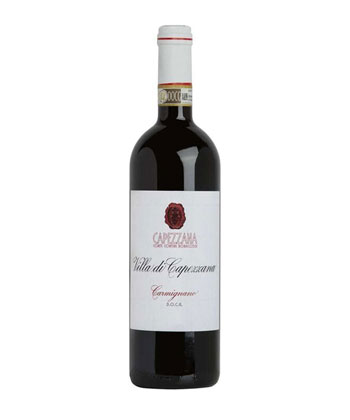While Chianti is the most familiar — and famous — Tuscan wine region, producing endlessly satisfying and easy-to-drink Sangiovese-based wines, there are other Tuscan wines that are well worth getting to know.
One that’s under the radar in this country is Carmignano, a small denomination just north of the Chianti Classico zone where winemakers have long blended Cabernet Sauvignon with Sangiovese. Cabernet, in fact, has been grown in the area for more than a century — it was transplanted from Bordeaux — and has been officially sanctioned in Carmignano wines since 1975.
Capezzana’s 2018 “Villa di Capezzana” Carmignano is a superb blend of 80 percent Sangiovese and 20 percent Cabernet Sauvignon. So what does this Cabernet element mean for the wine?
Don’t Miss A Drop
Get the latest in beer, wine, and cocktail culture sent straight to your inbox.

Most noticeably, it gives it a firmer tannic structure, producing a bit more “heft” in the wine than what you might find in a Chianti Classico, for example. And beyond Sangiovese’s typical red fruit and dried herb notes, the Cabernet also gives the wine additional darker fruit tastes like blackberry and blueberry. Hints of balsamic and cedar round out the picture, and the oak treatment is well integrated.
It all adds up to a superb $25 to $30 Tuscan red that rivals the far more expensive “super Tuscans” that also include Bordeaux and other varieties in their blends.
While Chianti is a quintessential red sauce pasta wine, Capezzana’s Carmignano screams out for meat, whether in rich ragus or with braised short ribs and leg of lamb, to name just a few possibilities. It would also be a natural pairing with roasted fall vegetables or ratatouille.
The Capezzana property has been in the Contini Bonacossi family since 1920, but grape-growing on the estate goes back some 1,200 years. With that long tradition and experience, it’s no wonder that the wine is outstanding. That it’s also an exceptional value makes it all the more notable.


